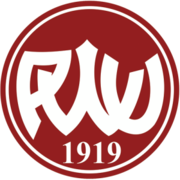Philippine Women's University
| Pamantasang Pambabae ng Pilipinas | |
 |
|
|
Former names
|
Philippine Women's College |
|---|---|
| Motto | The First University for Women in Asia, Founded by Asians |
| Type | Private, Non-sectarian, University |
| Established | 1919 |
| Chairman | Former Senator Helena Z. Benitez |
| President | Dr. Jose Francisco B. Benitez |
|
Academic staff
|
Approx. 500 |
| Undergraduates | Approx. 5,000 |
| Location |
1743 Taft Avenue Malate, Manila, Philippines 14°34′27″N 120°59′23″E / 14.574298°N 120.989634°ECoordinates: 14°34′27″N 120°59′23″E / 14.574298°N 120.989634°E |
| Campus |
Urban: two universities on three campuses(with Philippine Women's College of Davao autonomous from PWU Metro Manila) |
| Hymn | PWU University Hymn |
| Colors | |
| Nickname | PWU Patriots |
| Affiliations | ASAIHL, SMIIC, PACU, COCOPEA. WACE, IAUP, IAU, ACUCA, WEW, WCC, WCCI |
| Website | pwu.edu.ph |
The Philippine Women's University (Filipino: Pamantasang Pambabae ng Pilipinas; commonly abbreviated as PWU) is a non-stock, non-profit, non-sectarian educational institution for men and women from elementary to college level.
PWU's basic education (with senior high) is catered by the Jose Abad Santos Memorial School (JASMS) in Manila and Quezon City.
A group of women in the Philippines in 1919 sought to further empower women of the country by allowing them access to education. Under the American administrative oversight from 1900 to July 4, 1946, education and democracy were the core of America's goal in "developing" the Philippines. Among the first, and perhaps more important, American legacy is the recognition of equality of women in the Philippine islands (years before mainland America embraced the concept).
Seven women who were prominent members of then Manila's social elite — Clara Aragon, Concepcion Aragon, Francisca Tirona Benitez, Paz Marquez Benitez, Carolina Ocampo Palma, Mercedes Rivera and Socorro Marquez Zaballero — founded the Philippine Women's College (PWC) with the assistance of the prominent lawyer, José Abad Santos, who drafted the university's papers: its constitution and by-laws. (Abad Santos was appointed by President Manuel L. Quezon to the Supreme Court of the Philippines just before the Japanese occupation as the fifth Chief Justice of the Supreme Court of the Philippines.)
The American colonial government gave Philippine Women's College its recognition as a university in 1932, 13 years after the school opened its doors. From 1932 up to the outbreak of the Second World War, Philippine Women's University opened its Department of Child Development; in 1938, a course in Social Civic training was incorporated into the curriculum. The academic programs were based on the founder's objectives to train Filipinas in civic responsibility.
Established families from all over the Philippines who could afford higher education sent their daughters to PWU. Most institutions offering higher education at that time were exclusively for young men, like PWU's neighbor, De La Salle College. Schools for women offering higher education were operated by secular or religious sisters of the Roman Catholic Church, including PWU's neighbors, Santa Isabel College, Assumption College, St. Paul College, Manila, Maryknoll College, and St. Scholastica's College. There was also Centro Escolar de Senoritas College which predated PWU by some 12 years, having been founded in 1907. The PWU had a more 'Americanized' curriculum than Centro Escolar.
...
Wikipedia
